Clothing: A Science and Justice Perspective
Sep 18, 2024
Climate change is a complex topic that overlaps into many different subjects. To get engaged in climate action it can be helpful to look at a topic that is interesting to you and see if there are any connections with climate change. The Gaia Project encourages high school students to think critically about the different aspects of climate change in the Climate Action Project (CAP). This 4–6-week program can be completed through the science or justice lens, sparking discussions about climate change and everyday topics.
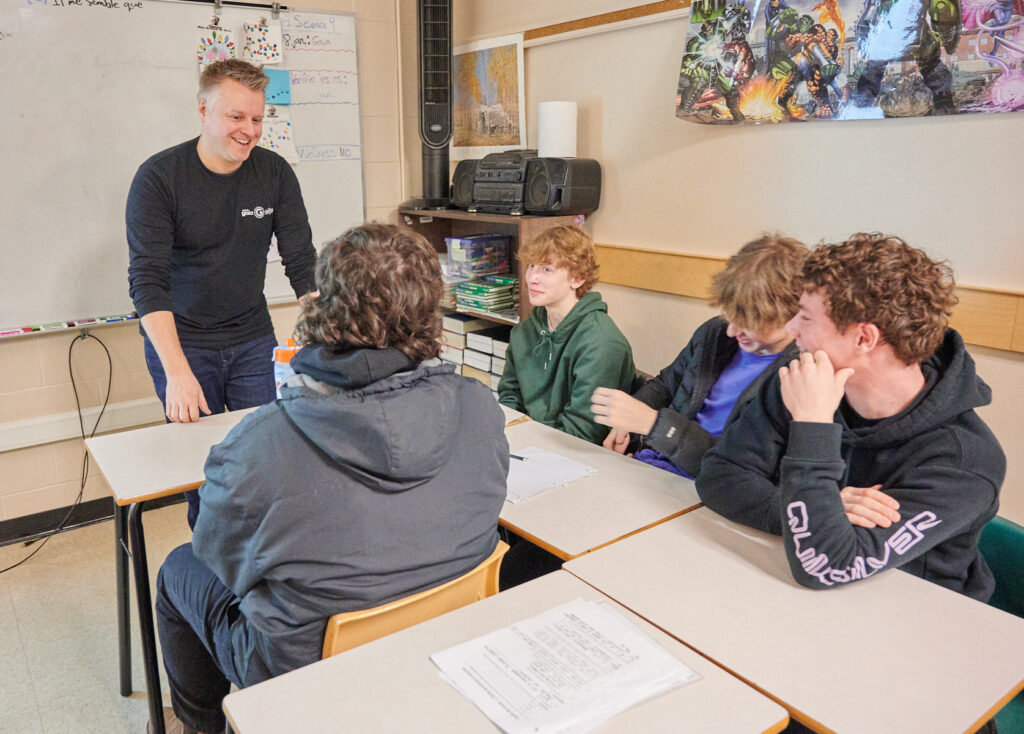
This blog is written to provide both the climate science and climate justice perspective of clothing. Let’s explore one topic (clothing and climate change) through the lens of each CAP stream, exploring some of the topics, questions, research, and conclusions that students might encounter along the way.
CAP Scenario: Your favourite sweater is beginning to fall apart, and you are preparing to put it away and buy something new. As you start searching online you see headlines about pollution from clothing manufacturing and unfair working wages for employees. You decide to dig deeper and do some research to understand what clothing is made of (science) and how humans are impacted by this industry (justice).
Climate Action Project: Science Focus
Q: What is clothing made of?
Clothing is made from fibers that can come from natural sources or man-made sources.
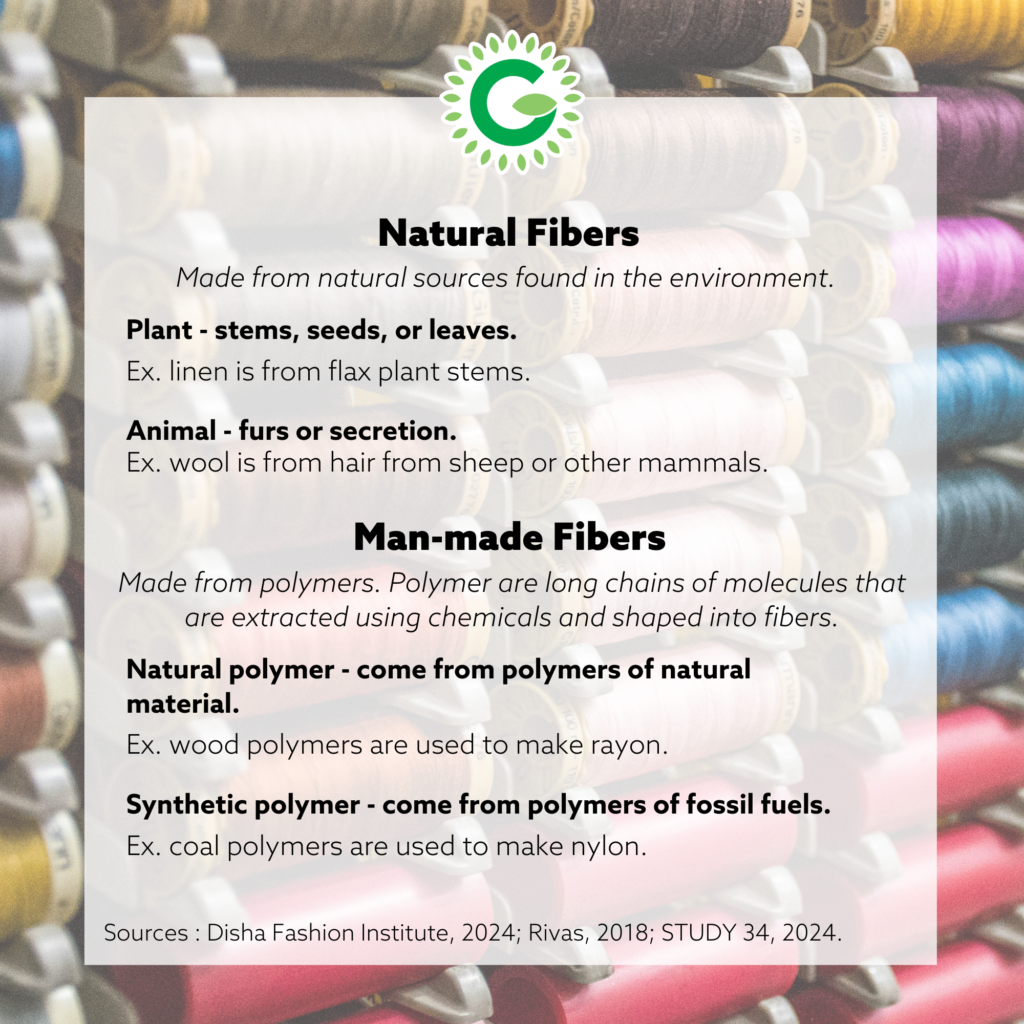
Q: If some clothing is made from fossil fuels, what kind of emissions does the clothing industry have?
The fashion industry is the 3rd most polluting industry, responsible for 10% of global carbon dioxide (CO2) emissions. In a lifecycle perspective there are emissions associated with all stages of clothing: the extraction of raw materials and production (which are energy-intensive), transport and shipping of goods, and disposal of clothes. Clothes can end up where they take up space in a landfill, or in some places are burned, producing large emissions of CO2 and other pollutants.
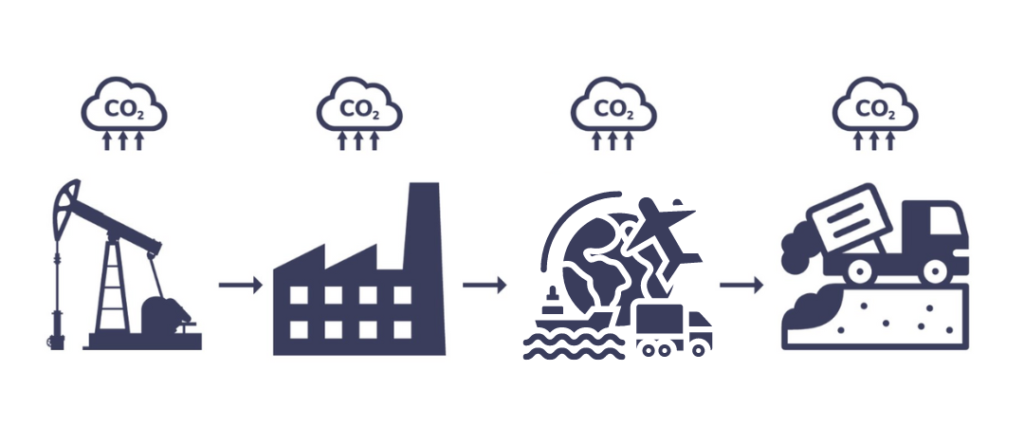
A lifecycle perspective looks at how emissions are generated at all stages in a product’s lifetime. It begins with materials extraction, then manufacturing or production of the item, transport and delivery, and finally disposal.
To learn more about my clothing I took 25 items from my closet and examined the labels to see what each piece was made of.
Q: How many different fiber types were there?
I recorded 9 different fiber types including 2 types of natural fibers and 7 types of man-made fibers. A lot of the items were blends, which are made from a mix of natural and man-made fibers. Even though a lot of the items had cotton (a natural fiber), most of them were blended with synthetic fibers.
Q: What percentage of items had man-made fibers?
88% of items had man-made fibers. Only 3 items (12%) were made completely from natural fibers.
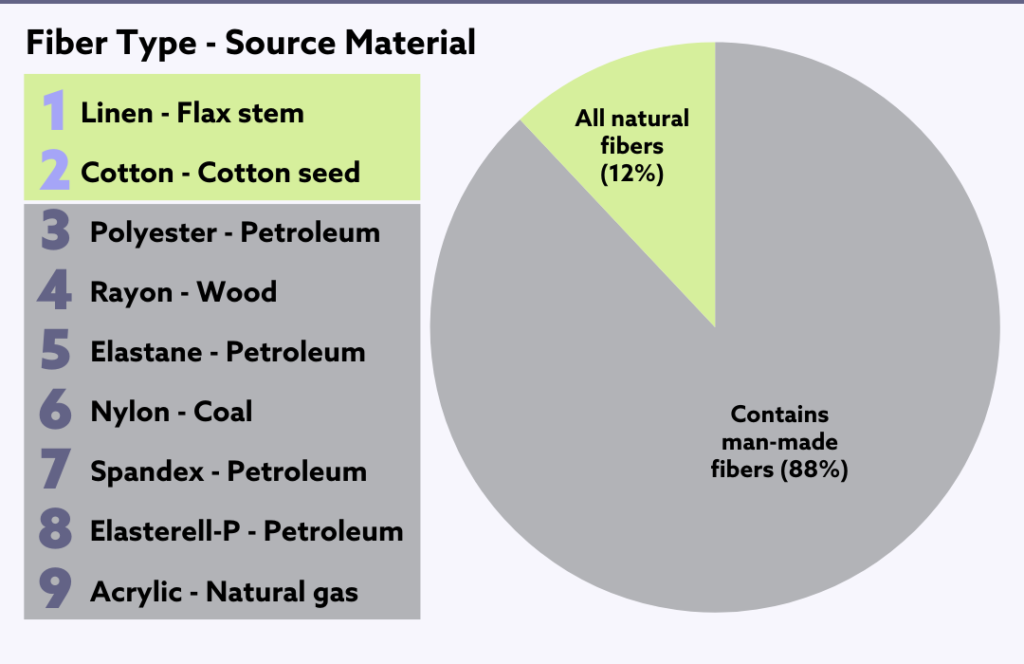
Project Conclusion: Now that I understand what my clothing is made of and the emissions that are involved, I can take actions that will reduce my clothing’s carbon footprint, like organizing a thrift or repair shop.
Climate Action Project: Climate Justice
Q: Does the clothing industry negatively impact the environment?
Yes. There are impacts related to emissions, water and waste pollution. Statistics on water usage for clothing production are alarming – it takes 2700 L of water to make 1 t-shirt. Much of this water is polluted in the process and disposed of into the environment. With climate change, freshwater resources are becoming limited and industries that pollute water are contributing to the crisis. Clothing also contributes to microplastic pollution; small pieces of plastic come off synthetic fibers during the item’s lifetime. Microplastics in the environment are putting stress on ecosystems that are essential in combating climate change like wetlands and waterways.
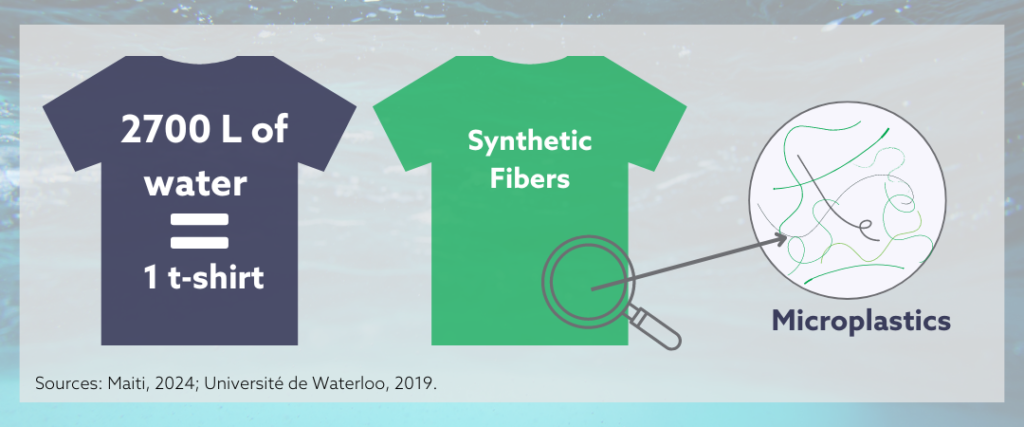
Clothing waste is a problem around the world and is accelerated by fast fashion companies. Fast fashion is a business model where clothing is mass-produced at a low cost and then sold in stores or online as quickly as possible. When consumers are done with clothes, they can end up in a landfill and some countries even ship their clothing waste across the world. Reducing waste is a priority for reaching climate change goals and it can start with buying and wasting less clothing.
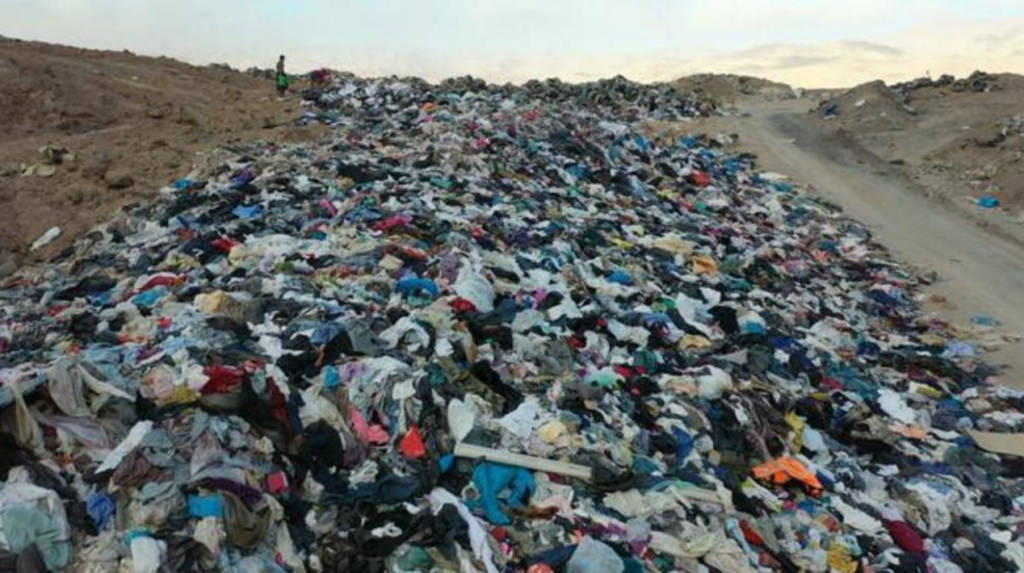
In December 2023 a CBS News story covered the issue of clothing waste and included this image of a landfill in Chile. It shows the enormous amount clothing waste from other parts of the world that is overwhelming the local ecosystem and community (Bojorquez, 2023).
Q: How does my clothing impact other people?
The clothing we buy was created by someone. In some factories, they do not pay workers fairly and have unsafe working conditions. Environmental and human rights activists around the world are speaking out about this exploitation. Unfortunately, these workers (like all of us) are also being affected by climate change which further decreases their quality of life. When we make decisions about where to buy our clothes, we are impacting other people even though it is not always in front of our eyes. We may not have the ability to stop the factories from operating, but we can take action on climate change and help reduce stress on the workers and communities involved.
In our day-to-day living, we might see clothing as an industry that is only accessible to some. This exclusion discourages individuality and may marginalize certain body types. Marginalization or marginalized groups are those who might be treated differently due to certain physical or cultural attributes. Inclusion and acceptance of all humans is important when we talk about climate action. As a society, we need to create inclusive industries and focus on unifying humans to join in action.
Project Conclusion: After learning about how the clothing industry is impacting the environment and humans, I can explore the options for ethical clothing in my area and consider ways to reduce clothing waste in my life.
Climate actions that previous CAP students have identified:
- Support second-hand or thrift shops. There is already a lot of clothing in circulation around us!
- Say no to fast fashion. Avoid companies that are identified as part of the fast fashion culture.
- Search for brands and stores with a reputation for fair working conditions and wages. Someone is making the clothing I am wearing, and I want them to be safe and healthy.
- Organize a clothing swap in your community, among friends, or family. Trade items to get something new and reduce waste.
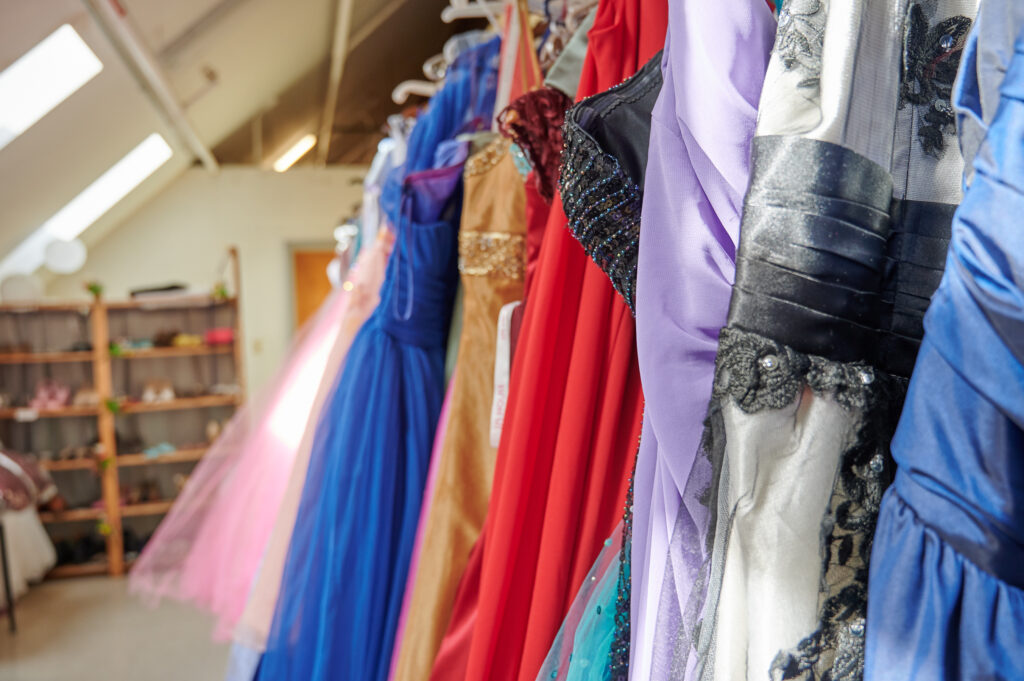
To minimize waste in the fashion industry and support clothing inclusivity, students and teachers at Harbourview High School in Saint John have created a prom clothing thrift store where students are encouraged to recycle their prom dresses, suits, shoes and accessories.
GET STARTED! Request a Climate Action Project: Science Focus, or Climate Action Project: Climate Justice program today!
Our team works directly with New Brunswick high school teachers to deliver CAP programs in diverse classrooms, encouraging students to explore the impacts of climate change in everyday life. The Gaia Project will provide students with the resources and support (in-person and virtually) to explore human impacts of environmental issues, and how to take climate action at your school.
The CAP Science Project directly integrates the award-winning EcoSchools Canada certification. By signing up, teachers and students gain access to a suite of actions and corresponding resources for taking climate action. By integrating this existing, nationally recognized program, students can learn more concrete ways to turn their ideas into climate action projects at their school.
Author: Jamylynn McDonald, Programs Coordinator, The Gaia Project
References
- Bojorquez, M. (Dec 2023). Inside the landfill of fast-fashion: “These clothes don’t even come from here.” CBS Saturday Morning. CBS News Online: https://www.cbsnews.com/news/inside-the-landfill-of-fast-fashion-chile/
- Climate Trade. (May 2023). The world’s most polluting industries. Climate Change News. Online: https://climatetrade.com/the-worlds-most-polluting-industries/
- Disha Fashion Insititute. (2024). Ultimate Guide: What are Fibers in Clothing and How Many Types of Fibers are There. Online: https://www.dishafashioninstitute.com/what-is-fibre-in-clothing-and-types-of-fibres
- Du Preez, P. (Nov 2020). Brown and White Coat Hanged on Rack. Unsplash. Online: https://unsplash.com/photos/brown-and-white-coat-hanged-on-rack-my5cwTzhmNI
- Hayes, A. (Feb 2024). Fast Fashion: How it Impacts Retail Manufacturing. Investopedia Online: https://www.investopedia.com/terms/f/fast-fashion.asp
- Kawaii Riot and Jadeisland. (Sept 2020). They’re Not Just Clothes: How Fasion is Linked with Social Justice. Online: https://www.kawaiiriot.org/krriot/theyre-not-just-clothes-how-fashion-is-linked-with-social-justice
- Maiti, R. (Jan 2024). Fast Fashion and Its Environmental Impact. EARTH. ORG. Online: https://earth.org/fast-fashions-detrimental-effect-on-the-environment/
- Rivas, H. (Nov 2018). Assorted Colour Thread Lot. Unsplash. Online: https://unsplash.com/photos/assorted-color-thread-lot-Nh6NsnqYVsI
- Stripe, M. (Mar 2018). Our Clothing Choices, Our Environment, Our Health. Womens Voices For the Earth (WVE). Online: https://womensvoices.org/2018/03/21/how-our-clothing-choices-impact-our-environment-and-physical-health/
- STUDY 34. (2024). Which Man-made Fibers Are Used to Make Our Clothes? Online: https://www.study34.co.uk/pages/man-made-fibres-clothing-fashion
- University of Waterloo. (Nov 2019). Water Impact of Your T-Shirt: 2700 L! Engineering Event. Online: https://uwaterloo.ca/engineering/events/water-impact-your-t-shirt-2700-litres#:~:text=You%20may%20not%20know%20that,to%20drink%20for%20900%20days.
Follow us on social for more stories, news and updates:
Facebook: www.facebook.com/gaiaproject
Instagram: @thegaiaproject_
Twitter: @gaiaproject
LinkedIn: @thegaiaproject-projetgaia
TikTok: @thegaiaproject_